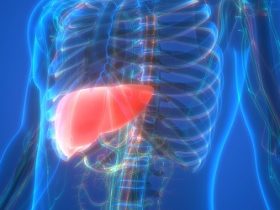Atrial fibrillation (AF) is the most prevalent sustained arrhythmia in the world today, and a condition associated with a 4- to 5-fold increased risk of stroke or systemic embolism. As an age-related issue, AF is expected to be seen more and more frequently in the U.S. due to the population’s aging. What should primary care physicians know about AF? Ty J. Gluckman, M.D., Medical Director at the Center for Cardiovascular Analytics, Research, and Data Science at Providence St. Joseph Health, in Portland, Oregon, covered the topic thoroughly in his fact-filled presentation at Pri-Med Southwest 2022. He began with the critical information on cause, risk, and reasons for concern:
Where and How Does AF Originate?
The pulmonary veins that sit on the backside of the left atrium are a major source of the origin for AF, but it also is influenced by atrial size, extent of fibrosis of the atrium, autonomic tone, inflammation, pressure in the atrium, and genetics, according to Dr. Gluckman. The condition is divided into four classifications: paroxysmal, persistent, long-term persistent, and permanent.
The likelihood of developing AF and its prevalence are directly linked to age with prevalence in both men and women rising significantly at around age 55 and increasing up to age 85.
Several conditions or circumstances are associated with AF, including valvular disease, pulmonary disease, sleep apnea, alcohol consumption, high blood pressure, and obesity, to name just a few.
Symptoms, and Lack of Symptoms
While AF can cause symptoms that include dizziness, fatigue, heart palpitations, and weakness, Dr. Gluckman noted that there are individuals who are entirely asymptomatic.
“As many as 10 percent of individuals are diagnosed with AF when they present with a stroke, TIA, or other form of systemic embolism. In short, they didn’t know they had AF until that event. So, typical, atypical, asymptomatic presentations, it doesn’t make a difference as it relates to risk of stroke or systemic embolism,” he said.
Assessing Patients
When a patient presents with suspected AF, an electrocardiogram is absolutely necessary, Dr. Gluckman said.
“It not only tells us information about their rhythm, but may tell us other things that underly, whether they may have signs or signatures of ischemic heart disease or other abnormalities like left ventricular hypertrophy. Pretty much everyone with AF also merits an echocardiogram to evaluate, among other things, left ventricular systolic function, left atrial size and function, and whether or not the patient has underlying valvular heart disease. Additional cardiac testing and lab work may be warranted depending on signs or symptoms,” he said.
Be Careful in Assessing Risk
There are two broad and parallel objectives in treating AF, Dr. Gluckman said: Mitigating the risk of stroke or systemic embolism and controlling symptoms, if they are present. Patients who have asymptomatic or atypical presentations of AF are the most challenging, as they have the same level of risk for stroke or systemic embolism, but they don’t appear so. Dr. Gluckman also noted that even one, brief episode of AF merits attention.
“In one study, as few as 5 minutes of AF was associated with a statistical increase in risk of TIA or stroke. So, if you see someone with AF, whether it’s been in existence for 20 years or just presented today, these individuals warrant a formal assessment of their risk of stroke or systemic embolism,” he said.





